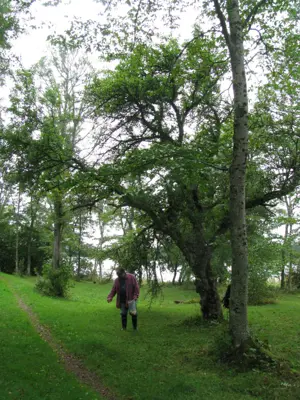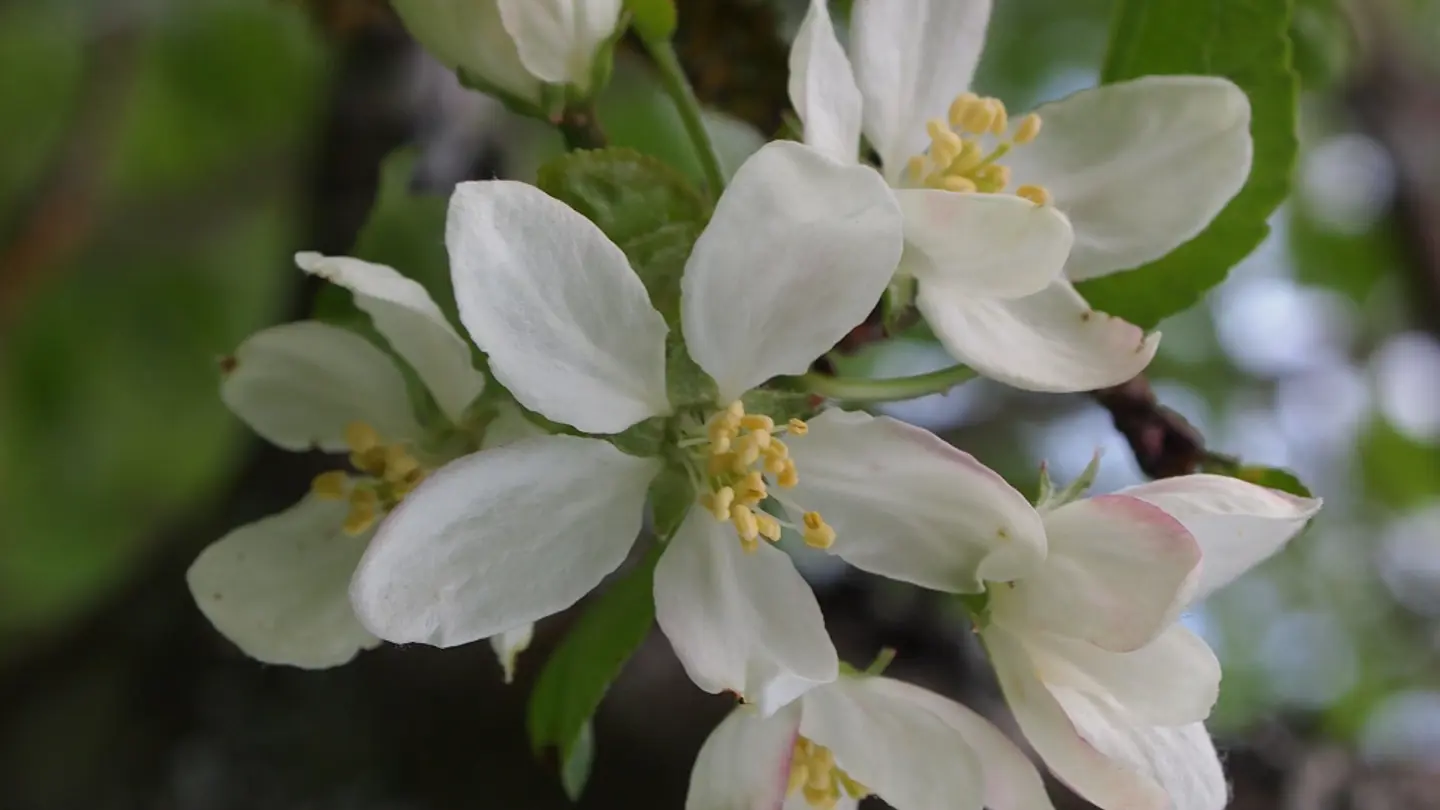
European crab apple (Malus sylvestris)
- Home
- Projects
- Crop Wild Relatives
- Plant portraits
- European crab apple (Malus sylvestris)
European crab apple is a small and thorny, native wild tree, which is distributed over most of the European countries, including all the Nordic countries except Iceland. Its scientific name, Malus sylvestris, means “forest apple”. It is found growing as single individuals or in small groups in forest edges, thickets, hedgerows or roadsides.
Text by Heli Fitzgerald, top photo by Henry Väre.

Crab apple is a wild relative of domesticated apple (Malus domestica) and also one of its ancestors. It has been identified that Malus sieversii, another wild apple species from from Central Asia, is domestic apple’s key ancestor. The wild apple was originally domesticated in Central Asia around 3000-4000 years ago and is one of the earliest trees to be cultivated. The European crab apple was a major secondary contributor of genes to the domesticated apple from about 1500 years ago, to the extent that domesticated apple is nowadays more closely related to crab apple than Malus sieversii.
Important traits
The domesticated apple trees have been improved for thousands of years first by farmers and later by breeders to get for example larger and sweeter fruits combined with pest and disease resistance or longer storage capacity. This has resulted in thousands of cultivated apple varieties across the world. The wild relatives can still harbour important traits and crab apple has been selected as one of the priority species in the Nordic crop wild relative conservation planning.
Crab apple is a relatively rare tree even though it grows in most of the European countries. In Finland it is only found growing in the southwest part of the country and is a protected species in the mainland Finland. In Norway it is more common in the south but has very scattered distribution towards north of the country. In Sweden crab apple can be found in the southern parts and in Denmark throughout the whole country. The main threat to the wild crab apple is hybridization with cultivated apple trees which has a significant impact on the population. However the extent of the effect on the genetic diversity is not thoroughly known. The other threats include the loss of natural habitats, forest management and unpredicted events which the species is susceptible to as it often grows as isolated individuals. Some conservation activities are already taking place in different European countries such as including the species in seedbank collections and conservation areas.

References
Glausiusz, J., 2014. Apples of Eden: Saving the Wild Ancestor of Modern Apples, National Geographic, May 9, 2014. Available at: http://news.nationalgeographic.com/news/apples-of-eden-saving-the-wild-ancestor-of-modern-apples/
Kik, C., Korpelainen, H., Vögel, R., Asdal, Å., Eliáš, P., Draper, D. & Magos Brehm, J. 2013. Malus sylvestris. The IUCN Red List of Threatened Species 2013: e.T172170A6841688. Available at: http://dx.doi.org/10.2305/IUCN.UK.2011-1.RLTS.T172170A6841688.en
Stephan B. R., I.Wagner and J.Kleinschmit. 2003. EUFORGEN Technical Guidelines for genetic conservation and use for wild apple and pear (Malus sylvestris and Pyrus pyraster). International Plant Genetic Resources Institute, Rome, Italy. ISBN 92-9043-604-2. Available here at: http://dx.doi.org/10.2305/IUCN.UK.2011-1.RLTS.T172170A6841688.en
Schmitz, A. M., Boyce, Y. B. 2017. Thompson Institute. “New genomic insights reveal a surprising two-way journey for apple on the Silk Road.” ScienceDaily. 15 August 2017. Available at: https://www.sciencedaily.com/releases/2017/08/170815095041.htm


